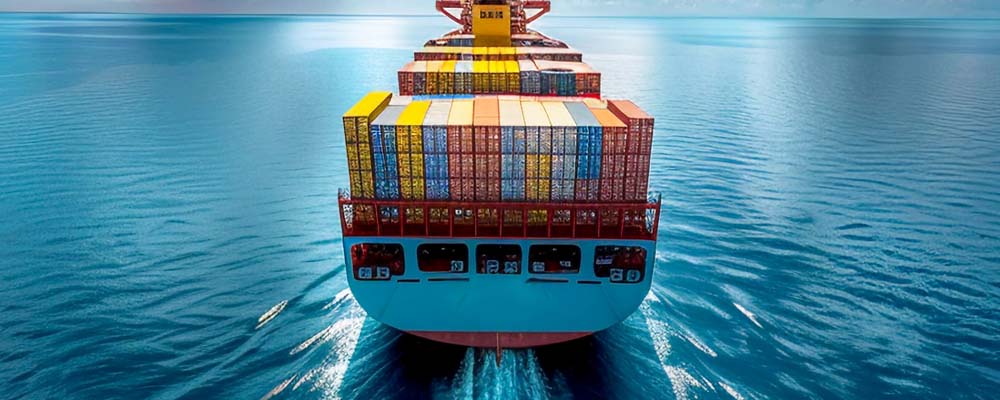
Navigating the sea freight shipment process can often feel overwhelming. However, understanding each step can streamline logistics, making international shipping more efficient and manageable. This guide offers a comprehensive overview, tailored for freight forwarding companies, logistics providers, importers, exporters, customs brokers, manufacturers, producers, and e-commerce businesses.
Why Choose Sea Freight?
Before diving into the process, it’s essential to understand why sea freight is a popular choice:
- Cost-Effective: Ideal for bulk shipments over long distances.
- Capacity: Allows for the transportation of large volumes.
- Versatility: Suitable for a variety of goods, from raw materials to finished products.
Step-by-Step Sea Freight Shipment Process
1. Booking Your Shipment
Begin by contacting a trusted freight forwarder or logistics provider. They will help you book your shipment, ensure you have the necessary documentation, and coordinate the entire process.
2. Packing and Labeling
Ensure your goods are packed securely to withstand the rigors of sea transport. Proper labeling is crucial for customs clearance and efficient handling.
3. Export Customs Clearance
Your freight forwarder will handle customs documentation and ensure your shipment complies with export regulations. This step is vital to avoid delays and potential fines.
4. Transportation to Port
The goods are subsequently transported to the departure port. This involves coordination with local transportation services and warehousing facilities if necessary.
5. Loading onto the Vessel
Once at the port, your goods are loaded onto the shipping vessel. This process is managed by port operators and stevedores who ensure the cargo is stowed securely.
6. Sea Transit
During transit, your goods will be on the ship for the duration of the voyage. Tracking services provided by your logistics company can keep you updated on the shipment’s progress.
7. Arrival at Destination Port
Upon arrival, the cargo is unloaded and goes through import customs clearance. Your freight forwarder will manage this process, ensuring all import regulations are met.
8. Delivery to Final Destination
Finally, the goods are transported from the destination port to their final destination. This last leg of the journey may involve additional warehousing and distribution services.
How Is Sea Freight Cost Calculated?
The cost of sea freight is determined by a variety of factors, which work together to create the final shipping rate. Here’s a breakdown of the primary components that influence the cost of sea freight:
Freight Rates
- The base rate for shipping goods via sea freight is influenced by the weight and volume of the cargo. Larger and heavier shipments generally incur higher costs. Freight rates can also vary based on the shipping route and the demand for space on a vessel.
Surcharges and Fees
- Several surcharges and fees can be applied to the base freight rate. Common surcharges include Bunker Adjustment Factor (BAF), which covers fluctuating fuel costs, and currency adjustment factor (CAF), which addresses variations in currency exchange rates. Other potential fees include port congestion charges, security surcharges, and documentation fees.
Container Type and Load
- The type of container used for shipping (e.g., standard dry container, refrigerated container, or special equipment) and whether the shipment is Full Container Load (FCL) or Less than Container Load (LCL) will impact the cost. FCL tends to be more cost-effective for larger shipments, while LCL allows for cost-sharing among multiple shippers.
Origin and Destination Ports
- Shipping costs can vary significantly depending on the origin and destination ports. Some ports may have higher handling charges, and distances between ports can affect fuel consumption and transit times.
Handling and Documentation
- Fees for handling and documentation are additional factors in calculating sea freight costs. This includes costs for loading and unloading at the ports, as well as fees for customs clearance and other necessary documentation.
Insurance
- While optional, purchasing insurance to protect against potential risks such as damage, theft, or loss during transit adds to the overall cost of sea freight.
Seasonality
- Peak shipping seasons, such as the time leading up to major holidays, can drive up sea freight costs due to increased demand for shipping space. Off-peak times may offer lower rates.
Key Considerations for Sea Freight
- Documentation: Ensure all necessary documents (Bill of Lading, Commercial Invoice, Packing List) are correctly prepared.
- Incoterms: Understand the terms of trade to clarify responsibilities between buyer and seller.
Conclusion
Mastering the sea freight shipment process is crucial for efficient and cost-effective international shipping. By following these steps and working closely with trusted logistics and freight forwarding partners, you can ensure a smooth and successful shipping experience.
Contact us today to learn more about our expert freight forwarding and logistics services.











